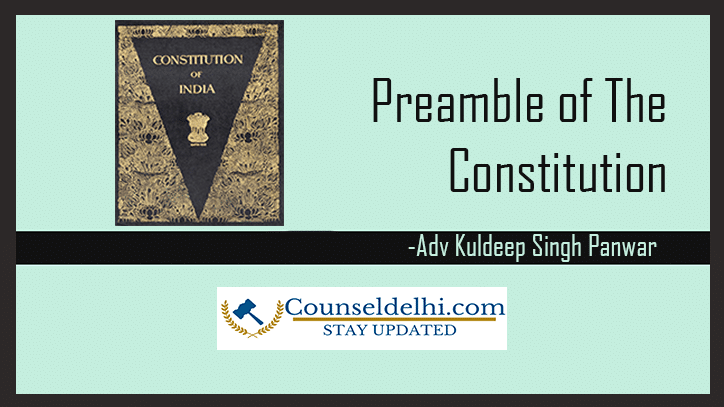What are the powers of the executive magistrate in real estate disputes?
Disputes arise over any real property such as land or water. Disputes arising from this threaten to breach peace within the society and dissolve public order. Section 145, 146, 147 has been provided in the Code of Criminal Procedure to deal with such danger.
This section deals with the process of settlement in respect of disputes related to real property which is likely to disturb public peace. According to sub-section (1) of section 145, the report/ information may be given to the Executive Magistrate if it is resolved on the basis of the report in this regard or on the basis of information received in any other way.
In order to take action under this section, it will be necessary that any dispute related to land or water should happen, which is likely to disturb the public peace. The Executive Magistrate can use his power only when there is a great danger of disruption of public peace due to any dispute related to that land or water.
In such a case no judicial decision is rendered by the Executive Magistrate, in fact, it is a preventive act, through which the Executive Magistrate uses to avoid the unrest arising out of the dispute and the ill effects of the deterioration of public order.
Section 145 Penal Procedure Code- In the case of Fakir Chandra vs Manaram AIR 1957 Punjab 304 it is said that the basic purpose of this section is to lay down the procedure for the speedy settlement of disputes which are related to land or water and which are possible to disturb public peace.
There are two main reasons for the purpose of this section:-
1) Dispute should be related to any real property land or water.
2) Public peace is likely to be disturbed by that dispute.
If there is a dispute in which the possibility of breach of public peace is negligible, then in such a situation Section 145 cannot be used. Section 145 can be used only when there is a danger of disturbing the prevailing public peace by a dispute over land or immovable property.
Many such disputes arise about any real property in the society, due to which there is a strong possibility of dissolving public peace. For example, the executive magistrate has been given this power to deal with such calamity if the two parties clashed with each other over the possession of a farm and the fight is sure to spread fear and violence in the society.
In the case of Mahant Ram Sumer Puri v. State of Uttar Pradesh AIR 1985 Supreme Court 477, it has been said that if the dispute pertains to any immovable property but there is no possibility of disturbing public peace, then Section 145 was not taken in such circumstances. He will be able to go.
In the case of Union of India v. Azimunnisa Khatoon AIR 2001 Guwahati, the Guwahati High Court while interpreting Section 145 clarified that the main purpose of the proceedings to be conducted under this section is to prevent the threat of breach of peace and not the title. The question has to be decided. Any executive magistrate has any information related to a dispute which is related to land or any other immovable property, in such a case, if the executive magistrate passes an order, it is not his judicial decision.
This does not mean that the power of this order is equal to the power of an order of a civil court. Disputes relating to any land will be settled by the Civil Court, but in the present circumstances, the Executive Magistrate exercises his power to prevent the breach of peace.
In the case of Kunj Bihari Das Bane Khetrapal Singh, it has been said that the order passed by the Magistrate under this section is only of a temporary nature and remains in existence until the dispute is resolved by a court of competent jurisdiction. Action is taken under this section regarding possession of property.
In the case of Keshav Singh v. Jagpal Singh AIR 1972 Allahabad High Court, it has been said that where the dispute is related to consumption rather than possession, then action will be taken under this section and not under section 147.
In Sukhlal Sheikh vs Tarachand, it has been said that the action taken under Section 145 of the CrPC is virtually civil in nature and can be considered as civil and civil executive. The order passed under this section 145 is a police order only and the title subject position is not decided under it.
In the case of Gyan Dev Sharma v. State of Bihar, the Magistrate refused to take action under Section 145 (5) in his case which was justified by the High Court as the dispute regarding land rights and possession was pending in the Civil Court. But the Court clarified the situation saying that if the dispute is based on issues other than these, then the Magistrate can pass the necessary order under Section 145 (5).
There is an important case of the state of Orissa, which is referred to as the case of Kumar Pradhan and others vs. Harabhoi and others. This is a 1971 case. In this case, there was a dispute between the heirs of the same family concerning the land. In this case, the principles of certain laws have been formulated with reference to Section 145.
Under Section 145, the Investigating Executive Magistrate should clearly decide which party was in possession within the period of 2 months prior to the passing of this primary order on the day of the first order. The question of suzerainty should be resolved beyond the validity of the right to assume suzerainty on the basis of actual suzerainty. In the investigation of Section 145, the Executive Magistrate should test all the documents and affidavits presented in the case thoroughly, using his discretion. Where any dispute between the parties regarding the disputed land or water is pending in the Civil Court, in such a case there is no justification for proceeding under Section 145 by the Executive Magistrate.
Where any dispute between the parties regarding the possession of immovable property is pending in any court, in that case, the proceedings under Section 145 of the Code of Criminal Procedure are not compatible with the law. The meaning of this principle is that the Executive Magistrate should issue any such order under section 145 only in a dispute arising suddenly.
If a dispute is already going on in the court and there is a civil case pending for it, it is not right for the Executive Magistrate to take action under Section 145 in such a situation. If he still takes such action, it will not be compatible with the law. The court challenged the order issued under section 145- If any order passed under Section 145 of the Code of Criminal Procedure is challenged in any session court or in the High Court, then such a challenge will be put up for review.
The aggrieved party can also seek treatment by filing a civil suit in the civil court. Appointing the receiver on a property in a real estate dispute, sometimes a situation arises that it is difficult for the executive magistrate to decide who was in possession while using the power of section 145 in the parties.
The Executive Magistrate is unable to make any decision regarding the persons entitled to possession. Section 146 is supplementary to section 145. In such a situation, Section 146 is used. Under Section 146, the Executive Magistrate appoints a receiver on a real estate.
The receiver appointed by the Executive Magistrate enjoys the same powers as the receiver under the Civil Procedure Code 1908. There are some grounds for appointing a receiver which may be- If the case is accidental the magistrate should decide that the subject matter is not in the possession of the party. Or the magistrate is also unable to determine which person is in possession of the property.
This fact has been considered in the case of Rupa Jeena vs. Tapai Swapan Jain. The Executive Magistrate attaches the property. After attaching the property, he appoints a receiver on it. Under sub-section (2) of section 146, the magistrate is empowered under sub-section (2) of section 146 to give the magistrate the power to appoint a receiver in respect of such crooked property.
The receiver so appointed shall have all the powers which the receiver appointed under Order 40 and Rule (1) of the Code of Civil Procedure shall have. There was a house dispute in the case of Mathura Lal vs Bhanwarlal. In this case, the court has said that even after attachment, the magistrate’s jurisdiction in the case does not end and it is appropriate for him to proceed with the investigation. Any executive magistrate can proceed with the investigation even after attachment and can pass a decision under section 145 again. Due to attachment of any property under section 146, the right of section 145 does not cease from the executive magistrate, and after attachment of the property under section 146 and appointing the receiver on it, continue its investigation can pass orders under.
Although the attachment was ordered 2 years after the commencement of the proceedings by the Executive Magistrate in the Jawaharlal vs Avadh Bihari case, the Court considered the order unfair. The attachment order should be so quick that the Executive Magistrate is taking some time to pass the order under Section 145.





